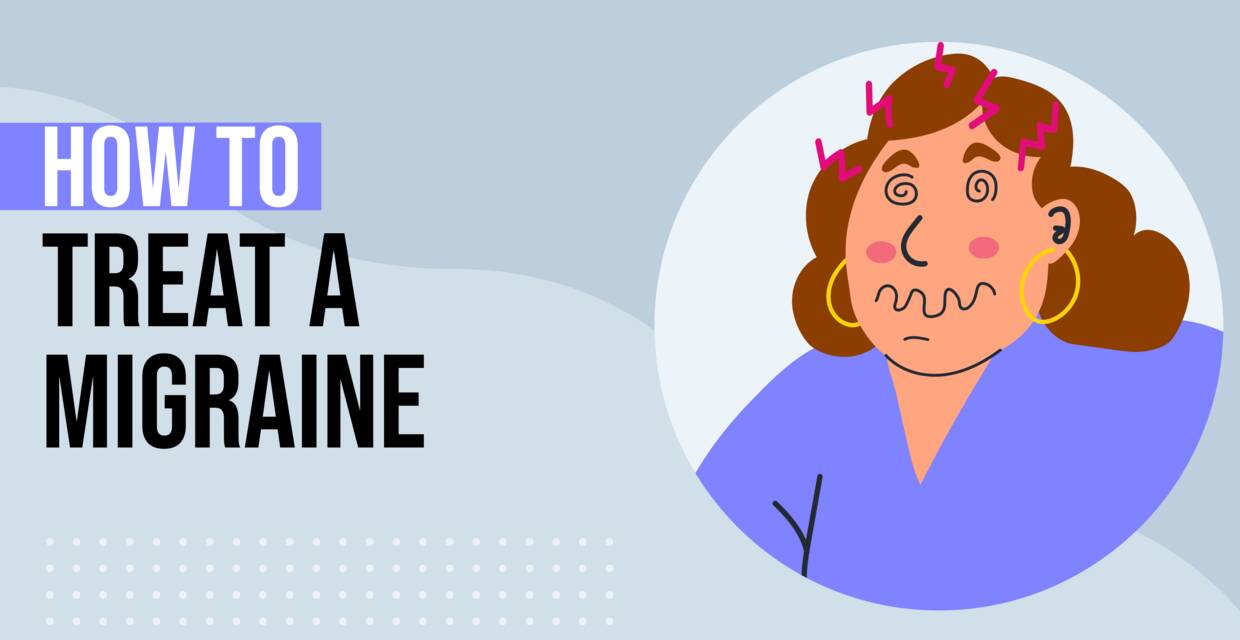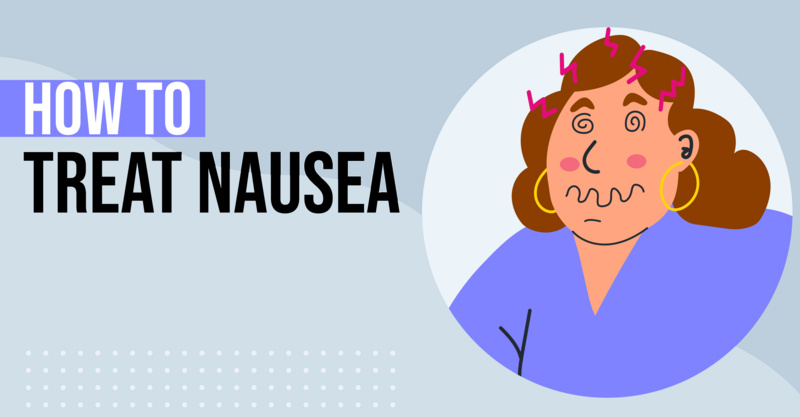Key Points
- Migraines, unlike regular headaches, are severe and can last for hours or days, often accompanied by light and sound sensitivity, nausea, and vomiting.
- The exact cause of migraines is unknown, but potential triggers include genetics, hormonal changes, certain foods, stress, and environmental factors.
- Some people may experience 'prodrome' and 'aura', which are warning symptoms of an impending migraine, including visual disturbances and difficulty speaking.
- Home remedies for migraines include over-the-counter pain relievers, caffeine, rest, regular exercise, maintaining magnesium levels, good sleep, yoga, and B vitamins.
- Prevention strategies for migraines include identifying and avoiding triggers, staying hydrated, ensuring adequate sleep, and managing stress.
If you are experiencing an intense headache with sensitivity to light and sound, you may be dealing with a migraine headache. According to the Mayo Clinic. They describe migraines as a type of headache that can cause these symptoms and can last for hours or even days. Sometimes, migraines can be debilitating enough to significantly impact your ability to function and accomplish your usual daily tasks.
What’s the Difference Between a Migraine and a Headache?
While migraines are often referred to as "a bad headache," they are actually a distinct type of headache with specific symptoms, according to the American Migraine Foundation. Unlike tension headaches (which are often described as a dull ache) migraines are typically described as a throbbing pain on one side of the head, with sensitivity to light and sound.
Causes of Migraines
The exact cause of migraines is not known, but research has discovered several factors that may contribute to their development. The Mayo Clinic notes that some of these factors include genetics, hormonal changes, certain foods or drinks, stress, and environmental factors.
Symptoms of a Migraine
In addition to the intense pain on one side of the head, migraines can also cause the following symptoms according to the Mayo Clinic:
- Pain is usually on one side of your head, but can be on both sides
- Pain that throbs or pulses
- Sensitivity to light, sound and sometimes smell and touch
- Nausea and vomiting
Some people may also experience “prodrome”, which is subtle changes in your body that may warn you that a migraine is on the way. The Mayo Clinic notes that prodrome can include:
- Constipation
- Mood changes, from depression to euphoria
- Food cravings
- Neck stiffness
- Increased urination
- Fluid retention
- Frequent yawning
Aura’s may also occur before or during a migraine, according to the Mayo Clinic. They can include:
- Visual disturbances—such as seeing various shapes, bright spots, or flashes of light
- Vision loss
- Pins and needles sensations in an arm or leg
- Weakness or numbness in the face or one side of the body
- Difficulty speaking
Migraines can be a debilitating condition that can significantly impact your quality of life. However, there are several things that you can try at home that may help ease symptoms and shorten the length of time for your migraine.
Home Remedies for a Migraine
1. Over-the-Counter Pain Relievers
Starting with one of the most common home treatments, according to the American Migraine Foundation—using over-the-counter pain relievers. This includes medication like ibuprofen, acetaminophen, or naproxen. There are also some over-the-counter medications that are specially formulated for migraines. The American Migraine Foundation recommends that you follow the package instructions for any over-the-counter medications.
2. Caffeine
Many people report getting some relief from migraine pain by drinking caffeine, according to the American Migraine Foundation. They recommend trying some coffee, tea, or soda. Additionally, they recommend trying to consume the same amount of caffeine consistently as caffeine withdrawal can also trigger a migraine.
3. A Dark, Quiet Room
Resting in a dark, quiet room can help reduce migraine symptoms, according to the American Migraine Foundation. Since sound and light can make symptoms worse, they note that it is important that you get to a dark and quiet environment.
4. Regular Exercise Routine
Exercise can help reduce the frequency and severity of migraines, according to the American Migraine Foundation. However, it's important to avoid exercise when you’re having a migraine attack, they note.
5. Magnesium
Low magnesium levels are linked to migraine symptoms, according to the American Migraine Foundation. You can make sure you’re getting enough magnesium by eating foods like nuts and leafy greens. Additionally, you can talk to your doctor about whether a magnesium supplement is right for you.
6. Good Sleep
Getting adequate sleep is important for both preventing migraines and getting rid of a migraine quickly, according to the American Migraine Foundation. They note that too much or too little sleep can be a trigger for migraine symptoms and that you should stick to a regular sleep schedule as much as possible.
7. Yoga
Yoga may be able to reduce the intensity and frequency of migraines, according to Healthline. They note one study looked at the effects of yoga on people who have chronic migraines and migraine symptoms were reduced more in those who did yoga along with receiving conventional care.
8. B Vitamins
B vitamins (also called riboflavin) can help reduce the frequency and severity of migraines, according to some studies cited by WebMD. Foods rich in vitamin B12 include chicken, fish, and dairy products.
9. Butterbur
Some people believe that butterbur can help reduce the frequency and severity of migraines, according to the American Migraine Foundation. However, they note that butterbur can cause liver toxicity if not taken correctly. Additionally, there isn’t much evidence to support herbal supplements like butterbur as an effective migraine treatment. The American Migraine Foundation recommends that you use caution if you decide to try it.
10. Essential Oils
Essential oils may have some therapeutic benefits when inhaled, ingested, or used topically (rubbed into the skin). Healthline notes that peppermint, lavender, and eucalyptus oils are especially helpful when you have a migraine. They suggest that you add a little bit of essential oil to a carrier oil like coconut or jojoba oil, then rub it on your wrists or temples.
11. Ginger
Ginger can help reduce pain and nausea associated with migraines, according to Healthline. They recommend that you try ginger tea or add ginger to your food.
12. Consider Trying Biofeedback
Biofeedback is a technique that can help you learn to control your body's response to stress, according to Healthline. They note that this can be beneficial for many health conditions, including migraines.
13. Acupuncture
Acupuncture is a traditional Chinese medicine technique that has been linked to helping migraine pain, according to Healthline. They note that given the evidence, acupuncture may be a worthwhile natural remedy.
14. Massage
Massage can help reduce tension which may be a migraine trigger for some, according to Healthline. Massage may also be able to relieve migraine pain. They suggest that you try gentle massage on your neck, scalp, and temples.
15. Apply a Cold Compress to the Scalp
Applying a cold compress or ice pack to different areas of your head or neck can help ease some migraines, according to WebMD. You may need to experiment with which area works best for you, but they recommend that you try applying the cold compress to your forehead, scalp, and the back of your neck.
16. Water
Dehydration can be a trigger for migraine symptoms, according to the American Migraine Foundation. They note that drinking plenty of water can not only help prevent migraines but also help reduce symptoms once a migraine begins.
17. Acupressure
Acupressure can help relieve migraine pain, according to Medical News Today. They Explain that there are pressure points on the ears, hands, and feet that can all help relieve pain.
When to See a Doctor for a Migraine
The Mayo Clinic notes that even if you have regular headaches you see your doctor if you have any changes in the pattern of your headache or suddenly feel different. Additionally, they list the following symptoms as reasons to see a healthcare provider:
- An abrupt, severe headache like a thunderclap
- Headache with fever, stiff neck, confusion, seizures, double vision, numbness or weakness in any part of the body
- Headache after a head injury
- A chronic headache that is worse after coughing, exertion, straining or a sudden movement
- New headache pain after age 50
How to Prevent a Migraine
Migraines can be debilitating and can affect your daily life—and while there are some remedies for treating them, prevention is always the best strategy. Here are some things you can do to reduce the frequency of your migraines, according to the American Migraine Foundation:
- Learn Your Triggers by Keeping a Migraine Diary
- Stay Hydrated
- Get Enough Sleep
- Manage Stress
Summary
Migraines affect around 1 in 5 women and 1 in 16 men (as well as 1 in 11 children), according to the Mayo Clinic. Although the exact reason isn’t known, you can learn what your triggers are and come up with a strategy for treating them when they do happen. Some things to remember when dealing with a migraine are:
- Using over-the-counter medications according to the package directions
- Staying in a dark, quiet environment
- Drink some caffeine
- Get enough magnesium and B vitamins
- Get some extra rest
- Try essential oils and ginger
- Biofeedback
- Stay hydrated
- Acupressure
- Acupuncture
- Cold compress
- Massage
- Butterbur
Frequently asked questions
What differentiates a migraine from a regular headache?
A migraine is a severe headache that can last for hours or days and is often accompanied by sensitivity to light and sound, nausea, and vomiting.What are some possible triggers for migraines?
Some potential triggers for migraines include genetics, hormonal changes, certain foods, stress, and environmental factors.What are 'prodrome' and 'aura' in the context of migraines?
'Prodrome' and 'aura' are warning signs that a migraine is about to occur. They can include visual disturbances, difficulty speaking, and other subtle changes.What are some home remedies for managing migraines?
Over-the-counter pain relievers, caffeine, resting in a dark, quiet room, regular exercise, maintaining magnesium levels, good sleep, yoga, and B vitamins are some home remedies for managing migraines.How can migraines be prevented?
Migraines can be prevented by learning what triggers them and avoiding these triggers, staying hydrated, getting enough sleep, and managing stress.When should I see a doctor for my migraines?
If your migraines are severe, unusual, or if you're experiencing symptoms you've never had before, it's important to see a doctor.Can lifestyle changes help in managing migraines?
Yes, lifestyle changes such as regular exercise, good sleep hygiene, yoga, and stress management can help in managing migraines.Can diet play a role in triggering migraines?
Yes, certain foods are known to trigger migraines in some people. It's important to identify and avoid these foods if they are a trigger for you.
Solv has strict sourcing guidelines and relies on peer-reviewed studies, academic research institutions, and medical associations. We avoid using tertiary references.


 LinkedIn
LinkedIn









